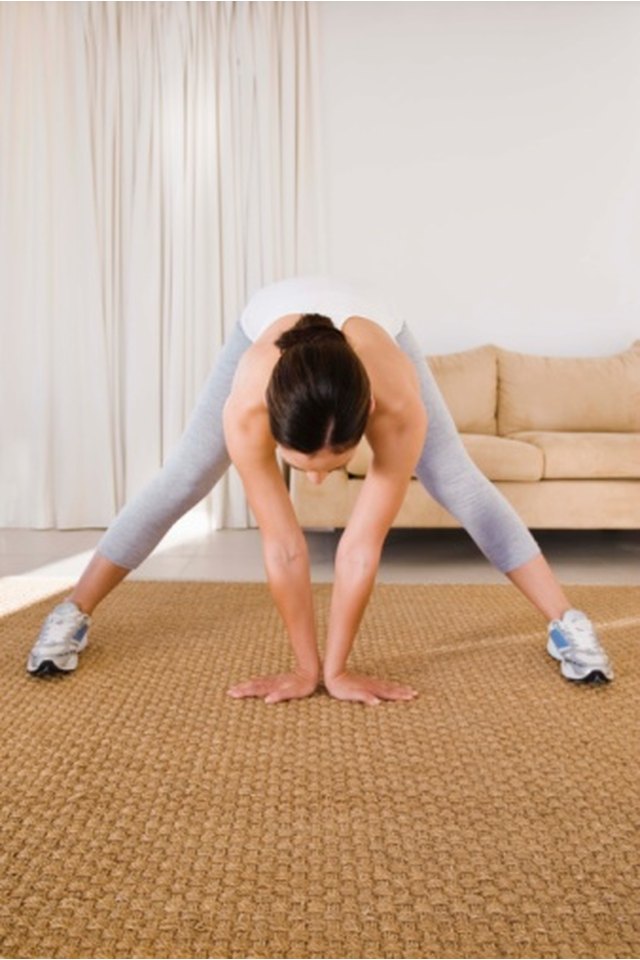What Exercises Can I Do in My Room to Lose Weight & Tone Muscles?

If you can't afford a gym membership or just don't like going to a gym, you can still reach your fitness goals. You can lose weight and tone your muscle in the privacy of your bedroom using your own body weight and a few dumbbells. Circuit training and cardio training will help you burn calories and can be done anywhere.
At-Home Cardio
Blast calories with aerobic training.The Health Status website explains that a 150-lb. person doing jumping jacks for 10 minutes burns 92 calories; jumping rope for 10 minutes burns 114 calories. To burn the most amount of calories, interval train in your room. Work at a high intensity for 30 seconds and a lower intensity for one minute. For example, start your workout with 10 minutes of jump rope, working hard for 30 seconds, followed by a lighter intensity for one minute. Then complete a circuit of high knees, butt kicks, jumping jacks and jump squats. Complete each exercise for a total of 90 seconds then proceed to the next exercise, repeat the circuit three times.
Toning at Home
Body-weight exercises require you to use no additional weight; use your body as resistance. These moves help tone your muscles by target training and also help you melt fat. Working with resistance allows you to build muscle and alter your body composition. Warm up by jumping rope for 10 minutes to move the body and begin to sweat. Then complete reverse lunges, squats, pushups, dips, planks and jump squats to target your upper and lower body without leaving your room.
Home Circuit Training
Circuit training helps to build strength and stamina, according to sports coach Brian Mac. Circuit training requires you to perform several different exercises for a specified number of repetitions or for a set time before moving from exercise to exercise with no break. Once a full circuit is complete you rest and then complete the circuit again, three to five times. Create a circuit of jumping jacks, squats, pushups, high knees, situps, bicep curls, lunges and military presses, completing each exercise for 30 seconds.
Healthy Tips
Stretch before and after you exercise to prevent injuries. Be mindful of your diet. Choosing to eat healthy foods will promote a faster weight loss and help you feel more energized during your workout. Eat lean meats, whole grains, low-fat dairy products, fruits, vegetables and nuts. Ditch empty calories like fast foods, alcohol and soda.
Explore In Depth
References
- Brian Mac: Circuit Training
- Health Status: The Most Accurate Calories Burned Calculator
- McPherron AC, Guo T, Bond ND, Gavrilova O. Increasing muscle mass to improve metabolism. Adipocyte. 2013;2(2):92-98. doi:10.4161/adip.22500
- Sperlich B, Wallmann-Sperlich B, Zinner C, Von Stauffenberg V, Losert H, Holmberg HC. Functional High-Intensity Circuit Training Improves Body Composition, Peak Oxygen Uptake, Strength, and Alters Certain Dimensions of Quality of Life in Overweight Women. Front Physiol. 2017;8:172. doi:10.3389/fphys.2017.00172
- Edwards M. Planes of motion explained. American Council on Exercise. Updated August 1, 2017.
Writer Bio
Brooke Peyman has been writing since 2004. Her articles have appeared in "The State Press." Peyman holds a Bachelor of Science in nutrition communication from Arizona State University and has also earned her Yoga Alliance Certification.
